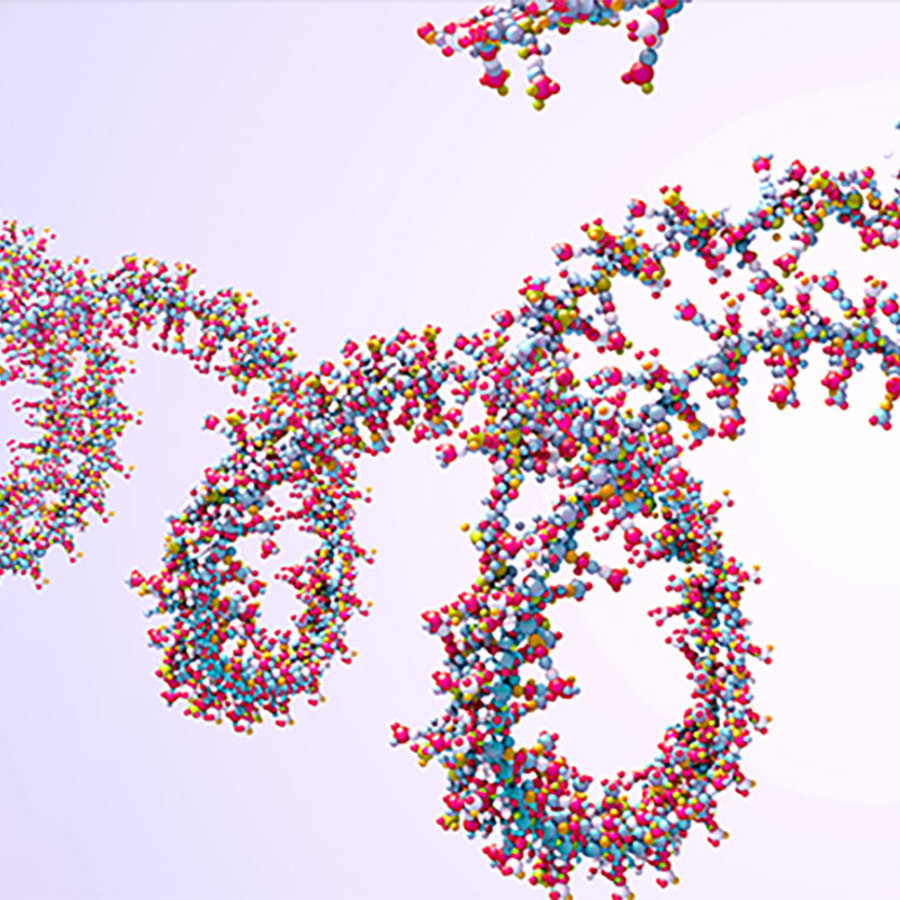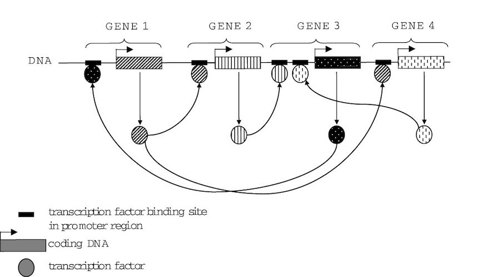
How are genes turned off in areas of the body where they are not needed?
March 20, 2008

- Related Topics:
- Gene expression,
- Transcription and translation,
- Noncoding DNA,
- Genes to proteins
A high school student from California asks:
“What causes the alleles in the genes to be turned off in certain areas of the body where they are not needed?”
Great question! A big part of the answer can be found in “promoters.”
Each gene has a promoter that allows it to be turned on or off in all the right places, at all the right times. And controlling how this happens is a big part of what makes us so complex!
But before we get into that, let's start at the beginning. Genes are the blueprint for making us who we are. Genes tell each cell in our body what to do and when to do it. For example, genes have the instructions for making liver cells, carrying oxygen in our blood, or helping us break down sugar. And how do they do all of this?
By making proteins. Each gene is a recipe for making a protein. And proteins are what carry out all of our body's functions like digestion, circulation, motion, etc. A large part of our body is made up of proteins.
But not every protein can do every job. Proteins are specialized to do certain things like carry oxygen in the blood or recognize bacteria in our bodies. And because of this, some proteins are only needed during certain times or in certain areas of the body. For example, proteins that build bone don't need to be in our hair!
So how do the proteins know which places in the body to be? The answer is that genes are able to be turned on and off in different places and at different times. And remember that genes make proteins. So when a gene is “on”, the protein is made.
And this is where promoters come in. Promoters are what turns genes on and off. So how do they work?
Promoters, like genes, are made up of A's, G's, C's and T's all lined up in a certain order. Promoters are usually located very close to the gene they control.
Each promoter is a set of instructions for what proteins should sit on it. The cell then looks at what proteins are there and decides whether or not to read the gene.
Let's think of turning on a gene, like turning on a light bulb in a room. Our gene is the light bulb and its promoter is the light switch.

It is hard to turn the light on in a pitch black room when you can't find the switch. This is why light switches sometimes are backlit to find them in a dark room. And this is how an “on” promoter works.
If a gene is supposed to be on, then the proteins on the promoter are set up so that the switch can be easily found by the cell. The promoter is “backlit” so the cell can find it.
And if a gene isn’t supposed to be on, it is like hiding the light switch behind a giant dresser. Or removing the switch entirely. Now the light can't be turned on at all. This is how we prevent our bone-making proteins from ending up in our hair!
The proteins that sit on the promoter and make it so the gene can be seen or not are called transcription factors (TFs). So TFs and promoters work together to turn a gene on (and make a protein). Or to turn a gene off (and stop making a protein). Or even to just make more or less protein.
Genes can either be on or off all of the time. Or be turned on only under special situations. How a gene is controlled is determined by these TFs.
Some genes, called housekeeping genes, are on all the time, in every cell. So their promoter (or light switch) has TFs that keep it in the “on” position all the time.
Other genes are only needed during certain times, like fighting an infection or making more bone. The promoters for these genes have TFs that tell the cell to only turn them on during these times or in these places. Think about this like those lights that come on automatically in the dark. Just as lights can respond to darkness or be on a timer, so can a gene.
Controlling how genes are turned on and off is important in making us run smoothly. Serious problems can happen when a cell messes up and the wrong gene is turned on or off.

Imagine if our bone making proteins were turned on at the wrong time or in the wrong place! In fact, this sort of thing is exactly what leads to cancer. Cancer develops when genes that control growth are misregulated. When this happens, cells grow uncontrollably and can create tumors.
Gene regulation is also important for making us who we are. In fact, new studies have shown that the differences between species might be in how genes are controlled. Humans and chimps have DNA that is 99% similar. These studies suggest that the physical differences between humans and chimps aren't in the genes but how those genes are turned on and off.
In other words, maybe all organisms have the same parts but it’s just how you use them that matters.

Author: Monica Rodriquez
When this answer was published in 2008, Monica was a Ph.D. candidate in the Department of Genetics, studying drosophila sex determination in Bruce Baker’s laboratory. Monica wrote this answer while participating in the Stanford at The Tech program.
 Skip Navigation
Skip Navigation
